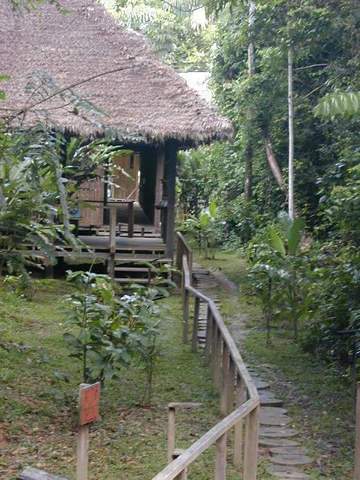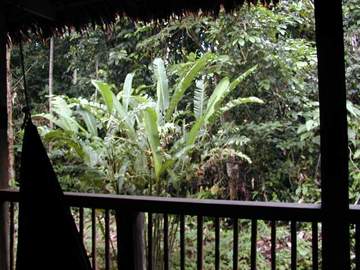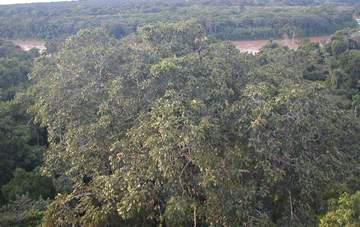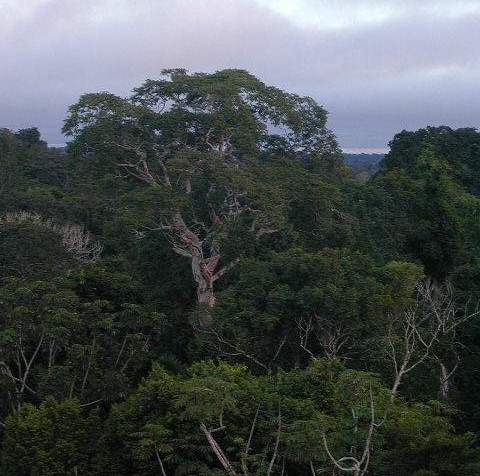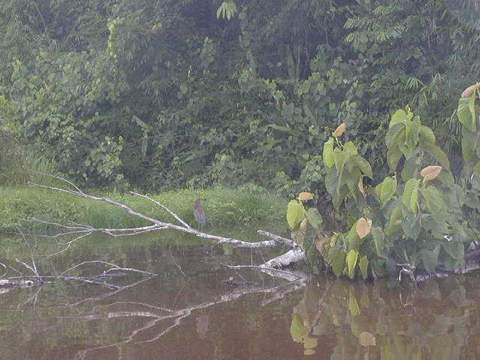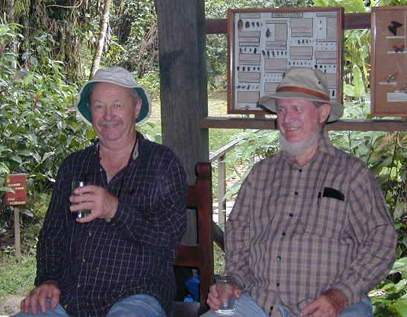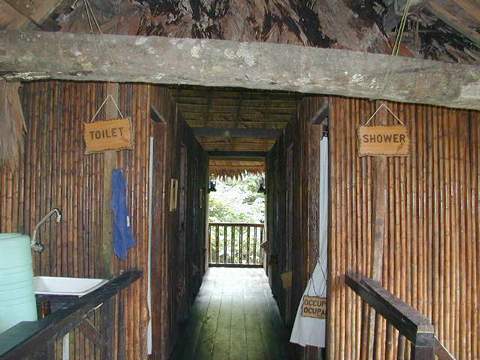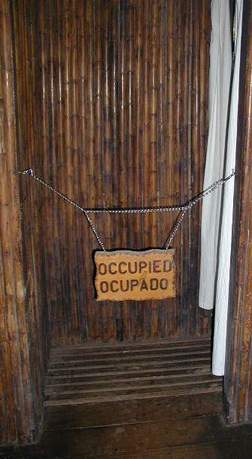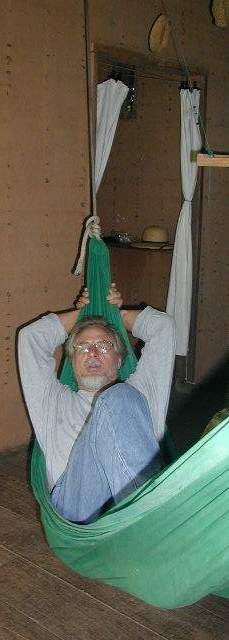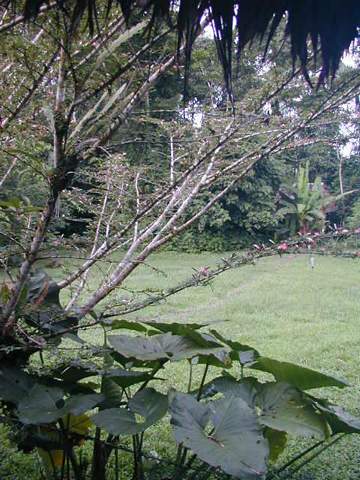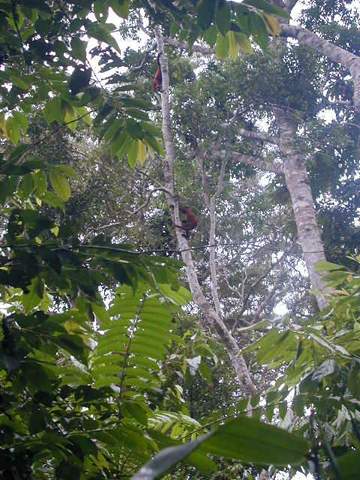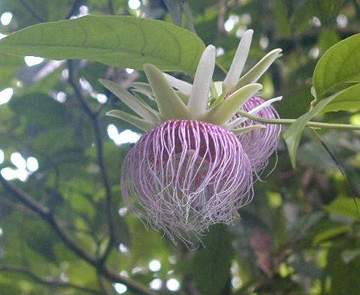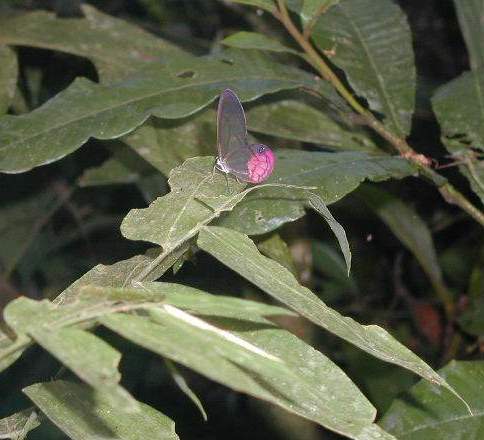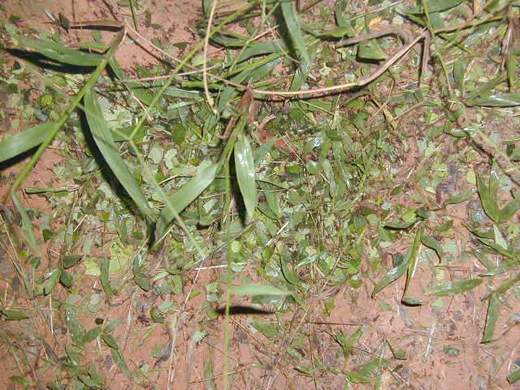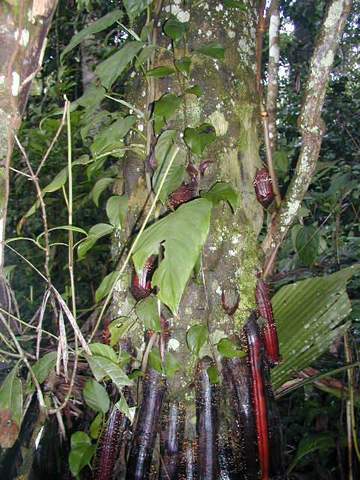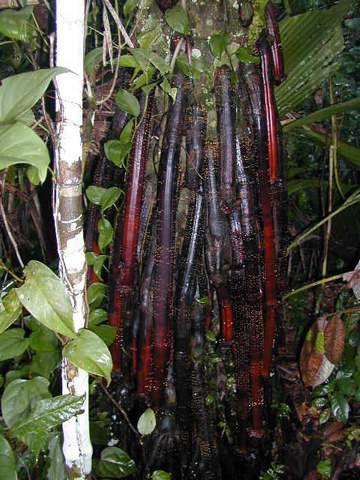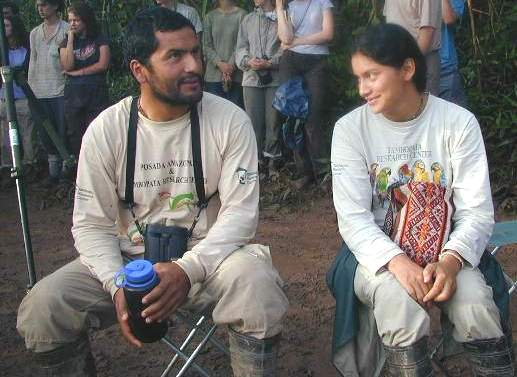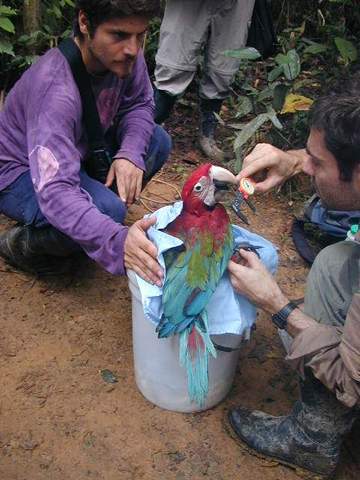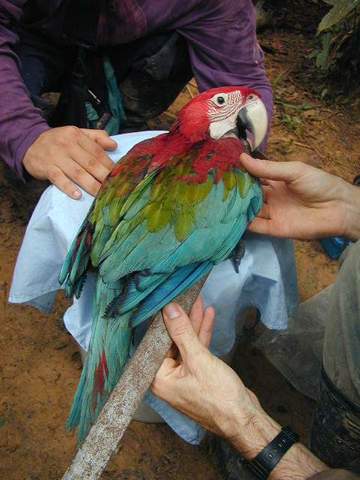Adventures aboard SV/Thaleia
|
Perú:
Tambopata Rainforest |
We went with Rainforest Expeditions, Inc. for our visit to the rainforest, and were very pleased with our choice. We chose this 5 day, 4 night trip because we could go much further into the rainforest than if we had chosen a shorter trip, and we would be close to the famous Colpa salt lick where macaws and parrots of all varieties feed every morning. We also appreciated the facilities; though rustic, the accommodations were lovely and the food was good, healthful and plentiful.
Our first night, we stayed at Posada Amazonas. It is close to Puerto Maldonado, only two hours by boat, so it's full most of the time. Though there were lots of people at the lodge, our group of 7 people stayed together with our guides throughout the 5 days Our room had no wall between our bed and the forest...just a floor and this rail. We had no problems with mosquitoes or other creatures, but we did have a nice mosquito net around our bed, just in case. There is no electricity in the lodges; the lanterns are lit by the staff at dusk and are snuffed out after everyone turns in.
| |
| The first evening, we hiked to the 100 meter observation tower to get a view of the canopy from above. At this site, we were looking at secondary forest, forest that still had a dense understory. The primary forest is much less dense because the trees block much of the sun needed for vines and plants to thrive in the understory. Eventually, if it isn't disturbed, the secondary forest reverts to primary forest characteristics.
For this activity,I had to abandon my fear of heights. I wasn't the only white knuckle climber though--some folks didn't even ascend the tower. | |
| Our
guides made every moment count. We were up before dawn on the second day so that
we could get to Lake Sandoval where we saw the giant river otters playing as well
as a multitude of bird species. Can you see the heron in this picture?
Most
of the animals that we saw were best viewed through a scope that the guides set
up for us. | |
| After
we left the otters to bask in the sun, we were on our way up the river.
...and a discreet caiman perhaps waiting for an opportunity for breakfast?
| |
| The Research Center lodge is even more rustic than the first lodge, with walls built of bamboo. As with the first lodge, there are no walls between the rooms and the jungle and here, there are no doors--just curtains.
Our guides and now, amigos. Our trip was packed with activities, so there wasn't much time to relax in this quaint sitting area... | |
| ...or hang out at the bar.
The food was great and we enjoyed getting to know the people in our group.
| |
|
These
guys were amazing. I thought we'd be the oldest in our group, | |
|
Of course, we had communal facilities.... | |
| ...and a unique solution for determining occupation when there are no doors.
|
Of course, John can (and does) nap at the drop of a hat... |
| Our backyard...
| 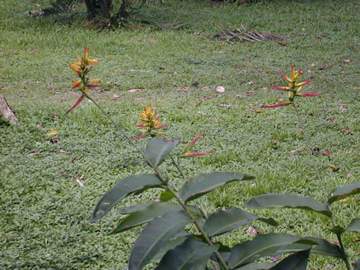 |
| We hiked through the forest many times, day and night, and each time, we saw something different. Since this area has more biodiversity than anywhere on earth, that shoulldn't be a surprise. The guides were amazing in that they spotted the animal, insect, and plant life that none of us could see until it was pointed out and viewed with a scope. Here, the monkies are monkeying around in the trees, playinig hide and seek with us.
| |
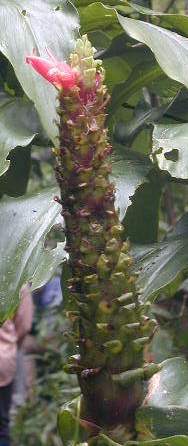 |
I can never resist trying to capture the beauty of flowers...I always wish I could remember the names of things...
Many of these lovlies open to the sun and then close for the evening. |
|
A beautiful transparent winged mariposa... also, notice the leaves. They've been cut by the leaf cutter ants. (see below) Each of these pieces of leaf is being carried away by an ant. The trail goes on for meters and meters with zillions of ants in the regiment.
| |
| The root system here is external to the trunk. The tree puts out shoots that quickly burrow in the ground to deliver lots of water to the tree.
| |
|
While we waited for the parrots to show up, our guide, Ruben, caught an admiring gaze from another guide. | |
| This is the claylick. Each morning (except when it rains), parrots show up to feed on the clay. We waited quietly across the wetlands for the birds to show up. They did--every variety of parrot that lives in Amazonia--and they feasted on the clay. Because we were so far away, the camera could not capture what we were able to see through the scope. Guess you'll just have to go and see for yourself!
| |
| On our last morning at the center, we went with the volunteers to fetch two baby macaws from their nest to log their vital stats. The center headed up a project to breed macaws and release them into the wild, and they are still doing some research on this project.
Every week, the baby birds, named Amor 1 and Amor 2, are brought down from their nest in a bucket, measured and weighed, and then put back into their nest.
| |
